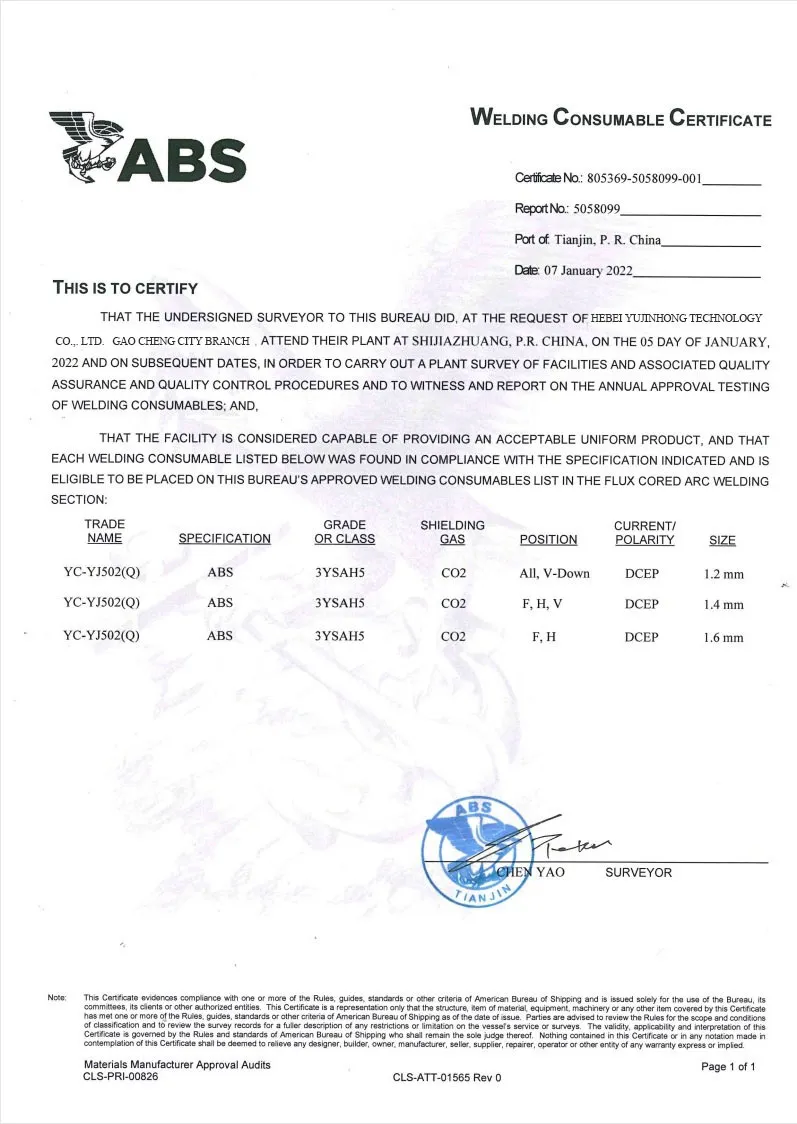stick welding rods
The Importance of Stick Welding Rods in Metal Fabrication
Stick welding, also known as shielded metal arc welding (SMAW), is a widely used welding technique in various industries due to its versatility and effectiveness. At the heart of this process are the stick welding rods, or electrodes, which play a crucial role in the quality and efficiency of the weld. Understanding the types, specifications, and applications of these rods is essential for both novice and experienced welders.
Stick welding rods are composed of a metal core surrounded by a coating that serves multiple purposes. The core is the filler metal that will be deposited into the weld joint, while the coating provides protection from contamination and influences the weld's characteristics. The choice of the appropriate welding rod is pivotal, as it affects the mechanical properties of the welded joint, including strength, ductility, and resistance to various environmental factors.
There are several types of stick welding rods, categorized primarily by their chemical composition and intended use. Common types include mild steel rods, stainless steel rods, and cast iron rods. Mild steel electrodes, such as the E6011 and E6013, are prevalent for general-purpose welding due to their ease of use and ability to produce strong, clean welds. Stainless steel rods, like the E308 and E309, are essential for applications requiring corrosion resistance, such as in food processing and chemical industries. Cast iron rods, on the other hand, are tailored for repairs and fabrications involving cast iron materials.
stick welding rods

When selecting a stick welding rod, it is vital to consider the welding position, thickness of the material to be welded, and the specific requirements of the project. The AWS (American Welding Society) classification system provides standardized designations for welding rods, categorizing them based on their properties and capabilities. For instance, an E6010 rod is known for its deep penetration and is ideal for vertical and overhead welding, while an E7018 rod offers a flatter bead and is preferred for more appearance-critical applications.
Moreover, the diameter of the welding rod also affects the welding process. Thicker rods deposit more material quickly but might require more heat to melt, while thinner rods allow for greater precision in delicate tasks. Therefore, understanding the relationship between rod diameter and the requirements of the job is essential for achieving optimal results.
In addition to selecting the right rod, proper handling and storage are critical for maintaining the performance of stick welding electrodes. Since they can absorb moisture, which can adversely affect the quality of the weld, it is crucial to store them in a dry environment and to recondition them if necessary before use.
In conclusion, stick welding rods are integral components in the welding process, influencing not only the strength and quality of welds but also the efficiency of the welding operation. By understanding the types, classifications, and proper management of these rods, welders can significantly improve the outcomes of their projects, ensuring strong and reliable metal fabrications for a variety of applications. Whether for home projects or industrial applications, mastery of stick welding and its essential tools remains a valuable asset in the field of metalworking.
-
E6011 Welding Rod for Arc Welding – High Performance & VersatilityNewsJul.26,2025
-
Welding Rod 2.0 mm for Structural Welding - High Strength & PrecisionNewsJul.25,2025
-
Factory Supply Cast Iron Welding Rods AWS ENi-CI High StrengthNewsJul.24,2025
-
Premium 7018 Welding Rods Electrodes for Strong WeldsNewsJul.23,2025
-
E71T-1 Shielding Gas for Gas Shielded Cored Wire Welding SolutionsNewsJul.22,2025
-
Premium Submerged Arc Welding Wire | Efficient Quality SolutionNewsJul.21,2025


